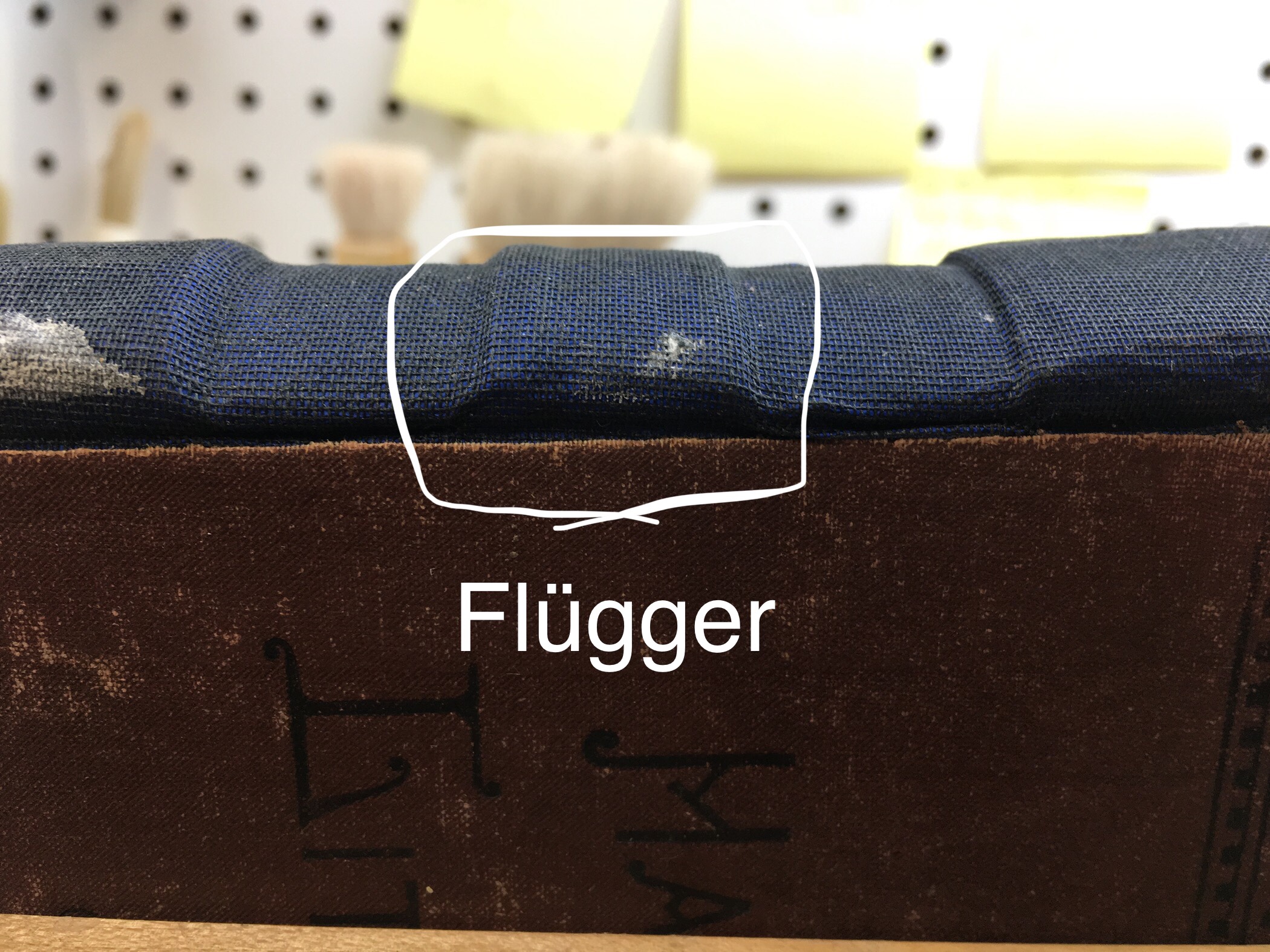The results are in! (Well, at least the preliminary results).
I spoke to the people at Talas who told me they had no product for my intended use (filling in a loss on a book spine, under deteriorated leather that I can’t lift).
The day I posted last, I took a book from my Library of broken books and fixed it up, attaching mull and false raised bands onto the spine with wheat starch paste (WSP), attached the original boards, inserted new endpapers, and covered the spine with some book cloth. I thought about using leather similar to the one on my client’s book, but I don’t have any old deteriorated leather that turns black and brittle with moisture just sitting around to cover spines with. I chose book cloth because this at least gives a visual indication of moisture.
With that in mind (last week), I bought glass micro-balloons, Beva Gesso-P fine texture, and Flügger Acrylspartel (acrylic putty).

Yesterday I mixed the glass balloons with wheat starch paste, and used a hypodermic needle to inject it into the loss I fabricated.
The WSP displayed the highest moisture content, and was the runniest substance. After 24 hours, it had set, with noticeable shrinkage and significant slump. It was easy to inject with a hypo, and the softest substance I worked with.

The next test was the Gesso. I chose this product primarily because of its description, low moisture, and known (conservation) stability with wood and wood products. The mineral powder suspended in the paste predictably didn’t like being worked through a hypodermic needle- I was forced to remove the needle and enlarge the injection site by cutting a small slit into the book cloth, and injecting it there. The delivery worked okay, but the results were very messy, and is proving very challenging to get out of uncoated book cloth.
It has been in place for 24 hours, and is still soft and malleable under the book cloth, and though it is still setting up, there is some minor shrinkage so far. Upon injection, the book cloth turned dark, and this hadn’t faded over the intervening time. Inspection of the inside of the book revealed that it smelled strongly of Gesso, but nothing had leaked within.

The last product I tested was Flügger. Though I had to fill the hypo without the needle, injection was done with the needle quite easily and with little mess. Flügger displayed the least amount of moisture, fastest setting, with zero slump and unnoticeable shrinkage.

I think, once it’s dry I will cut the spine off and take a look at how the fillers interacted/soaked into/settled in place, and make my final decision on what I’ll use. As of now I’m leaning towards Flügger. I’ve found this report mentioning that Polycell Fine Surface Polyfilla was a superior product, so I’ve ordered some of that online (not easy to find here in the states, surprisingly). When it arrives, I’ll see about putting it in the last loss in my testing spine, and we can compare.
Updates will follow!

